540 low relevance results shown for 'Red'. Prev |1|2|3|4|5|6|7|8|9|10|11|12|13|14|15|16|17|18|19|20|21|22 | Next | View 100 per page
Showing low relevance matches only. Return to normal search results
DNA - The transmission of heritable characteristics from one generation to the next involves DNA and genes ACSSU097 Year 6 Physical Sciences
Electrical Circuits - Electrical energy can be transferred and transformed in electrical circuits and can be generated from a range of sources ACSSU115 Year 7 Earth and Space Sciences
Earth Moon Sun - Predictable phenomena on Earth, including seasons and eclipses, are caused by the relative positions of the sun, Earth and the moon ACSSU229 Year 10 Physical Sciences
Forces and Motion - The motion of objects can be described and predicted using the laws of physics ACSBL029 Year 11 Biodiversity and the interconnectedness of life
Ecosystem dynamics - Models of ecosystem interactions (for example, food webs, successional models) can be used to predict the impact of change and are based on interpretation of and extrapolation from sample data (for example, data derived from ecosystem surveying techniques ACSBL085 Year 12 Heredity and continuity of life
DNA genes and the continuity of life - Frequencies of genotypes and phenotypes of offspring can be predicted using probability models, including Punnett squares, and by taking into consideration patterns of inheritance, including the effects of dominant, autosomal and sex-linked alleles and mu ACSBL090 Year 12 Heredity and continuity of life
Continuity of life on Earth - Natural selection occurs when selection pressures in the environment confer a selective advantage on a specific phenotype to enhance its survival and reproduction; this results in changes in allele frequency in the gene pool of a population ACSBL091 Year 12 Heredity and continuity of life
Continuity of life on Earth - In additional to environmental selection pressures, mutation, gene flow and genetic drift can contribute to changes in allele frequency in a population gene pool and results in microevolutionary change ACSCH056 Year 11 Molecular interactions and reactions
Intermolecular forces and gases - The shapes of molecules can be explained and predicted using three dimensional representations of electrons as charge clouds and using valence shell electron pair repulsion (VSEPR) theory ACSCH073 Year 11 Molecular interactions and reactions
Rates of chemical reactions - Catalysts, including enzymes and metal nanoparticles, affect the rate of certain reactions by providing an alternative reaction pathway with a reduced activation energy, hence increasing the proportion of collisions that lead to a chemical change ACSCH091 Year 12 Equilibrium acids and redox reactions
Chemical equilibrium systems - Over time, physical changes and reversible chemical reactions reach a state of dynamic equilibrium in a closed system, with the relative concentrations of products and reactants defining the position of equilibrium ACSCH096 Year 12 Equilibrium acids and redox reactions
Chemical equilibrium systems - Equilibrium position can be predicted qualitatively using equilibrium constants ACSCH097 Year 12 Equilibrium acids and redox reactions
Chemical equilibrium systems - Acids are substances that can act as proton (hydrogen ion) donors and can be classified as monoprotic or polyprotic depending on the number of protons donated by each molecule of the acid ACSCH098 Year 12 Equilibrium acids and redox reactions
Chemical equilibrium systems - The strength of acids is explained by the degree of ionisation at equilibrium in aqueous solution, which can be represented with chemical equations and equilibrium constants (Ka) ACSCH099 Year 12 Equilibrium acids and redox reactions
Chemical equilibrium systems - The relationship between acids and bases in equilibrium systems can be explained using the Brønsted Lowry model and represented using chemical equations that illustrate the transfer of hydrogen ions ACSCH100 Year 12 Equilibrium acids and redox reactions
Chemical equilibrium systems - The pH scale is a logarithmic scale and the pH of a solution can be calculated from the concentration of hydrogen ions; Kw can be used to calculate the concentration of hydrogen ions from the concentration of hydroxide ions in a solution ACSCH101 Year 12 Equilibrium acids and redox reactions
Chemical equilibrium systems - Acidbase indicators are weak acids or bases where the acidic form is of a different colour to the basic form ACSCH102 Year 12 Equilibrium acids and redox reactions
Chemical equilibrium systems - Volumetric analysis methods involving acidbase reactions rely on the identification of an equivalence point by measuring the associated change in pH, using chemical indicators or pH meters, to reveal an observable end point ACSCH103 Year 12 Equilibrium acids and redox reactions
Oxidation and reduction - A range of reactions, including displacement reactions of metals, combustion, corrosion, and electrochemical processes, can be modelled as redox reactions involving oxidation of one substance and reduction of another substance ACSCH104 Year 12 Equilibrium acids and redox reactions
Oxidation and reduction - Oxidation can be modelled as the loss of electrons from a chemical species, and reduction can be modelled as the gain of electrons by a chemical species; these processes can be represented using half equations ACSCH106 Year 12 Equilibrium acids and redox reactions
Oxidation and reduction - The relative strength of oxidising and reducing agents can be determined by comparing standard electrode potentials ACSCH107 Year 12 Equilibrium acids and redox reactions
Oxidation and reduction - Electrochemical cells, including galvanic and electrolytic cells, consist of oxidation and reduction half reactions connected via an external circuit that allows electrons to move from the anode (oxidation reaction) to the cathode (reduction reaction) ACSCH108 Year 12 Equilibrium acids and redox reactions
Oxidation and reduction - Galvanic cells, including fuel cells, generate an electrical potential difference from a spontaneous redox reaction; they can be represented as cell diagrams including anode and cathode halfequations ACSCH110 Year 12 Equilibrium acids and redox reactions
Oxidation and reduction - Cell potentials at standard conditions can be calculated from standard electrode potentials; these values can be used to compare cells constructed from different materials ACSCH130 Year 12 Structure synthesis and design
Properties and structure of organic materials - Data from analytical techniques, including mass spectrometry, xray crystallography and infrared spectroscopy, can be used to determine the structure of organic molecules, often using evidence from more than one technique ACSPH040 Year 11 Thermal nuclear and electrical physics
Electrical circuits - The energy available to charges moving in an electrical circuit is measured using electric potential difference, which is defined as the change in potential energy per unit charge between two defined points in the circuit ACSPH041 Year 11 Thermal nuclear and electrical physics
Electrical circuits - Energy is required to separate positive and negative charge carriers; charge separation produces an electrical potential difference that can be used to drive current in circuits ACSPH061 Year 11 Linear Motion and Waves
Linear motion and force - Representations, including graphs and vectors, and/or equations of motion, can be used qualitatively and quantitatively to describe and predict linear motion ACSPH064 Year 11 Linear Motion and Waves
Linear motion and force - Momentum is a property of moving objects; it is conserved in a closed system and may be transferred from one object to another when a force acts over a time interval ACSPH065 Year 11 Linear Motion and Waves
Linear motion and force - Energy is conserved in isolated systems and is transferred from one object to another when a force is applied over a distance; this causes work to be done and changes to kinetic and/or potential energy of objects ACSPH073 Year 11 Linear Motion and Waves
Waves - A mechanical system resonates when it is driven at one of its natural frequencies of oscillation; energy is transferred efficiently into systems under these conditions ACSPH076 Year 11 Linear Motion and Waves
Waves - A wave model explains a wide range of lightrelated phenomena including reflection, refraction, total internal reflection, dispersion, diffraction and interference; a transverse wave model is required to explain polarisation ACSPH021 Year 11 Thermal nuclear and electrical physics
Heating processes - Change of state involves internal energy changes to form or break bonds between atoms or molecules; latent heat is the energy required to be added to or removed from a system to change the state of the system
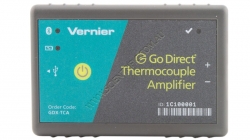
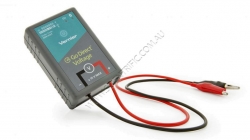
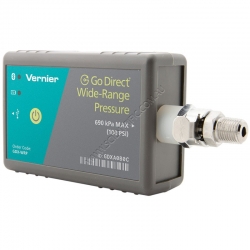
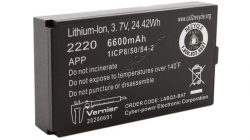
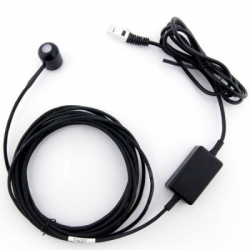


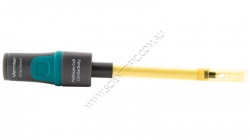
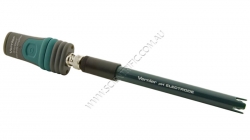
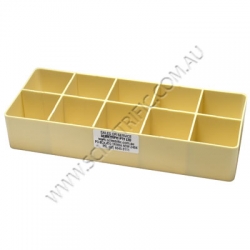
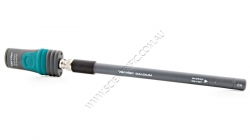
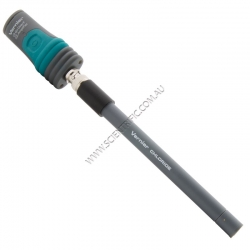
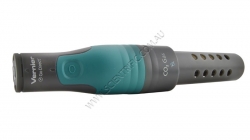
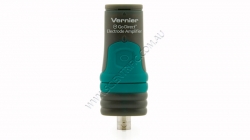

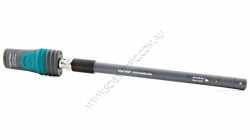
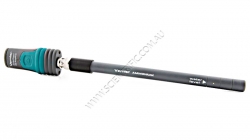
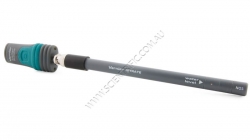
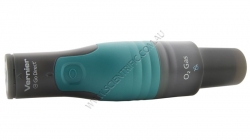

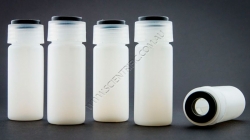
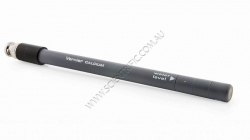
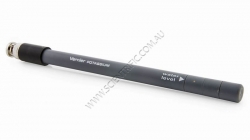
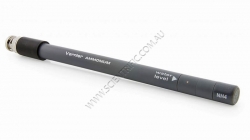
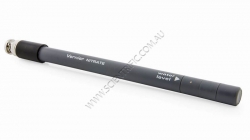
540 low relevance results shown for 'Red'. Prev |1|2|3|4|5|6|7|8|9|10|11|12|13|14|15|16|17|18|19|20|21|22 | Next | View 100 per page
Showing low relevance matches only. Return to normal search results
Curriculum resources related to 'Red'
ACSSU184 Year 10 Biological SciencesDNA - The transmission of heritable characteristics from one generation to the next involves DNA and genes ACSSU097 Year 6 Physical Sciences
Electrical Circuits - Electrical energy can be transferred and transformed in electrical circuits and can be generated from a range of sources ACSSU115 Year 7 Earth and Space Sciences
Earth Moon Sun - Predictable phenomena on Earth, including seasons and eclipses, are caused by the relative positions of the sun, Earth and the moon ACSSU229 Year 10 Physical Sciences
Forces and Motion - The motion of objects can be described and predicted using the laws of physics ACSBL029 Year 11 Biodiversity and the interconnectedness of life
Ecosystem dynamics - Models of ecosystem interactions (for example, food webs, successional models) can be used to predict the impact of change and are based on interpretation of and extrapolation from sample data (for example, data derived from ecosystem surveying techniques ACSBL085 Year 12 Heredity and continuity of life
DNA genes and the continuity of life - Frequencies of genotypes and phenotypes of offspring can be predicted using probability models, including Punnett squares, and by taking into consideration patterns of inheritance, including the effects of dominant, autosomal and sex-linked alleles and mu ACSBL090 Year 12 Heredity and continuity of life
Continuity of life on Earth - Natural selection occurs when selection pressures in the environment confer a selective advantage on a specific phenotype to enhance its survival and reproduction; this results in changes in allele frequency in the gene pool of a population ACSBL091 Year 12 Heredity and continuity of life
Continuity of life on Earth - In additional to environmental selection pressures, mutation, gene flow and genetic drift can contribute to changes in allele frequency in a population gene pool and results in microevolutionary change ACSCH056 Year 11 Molecular interactions and reactions
Intermolecular forces and gases - The shapes of molecules can be explained and predicted using three dimensional representations of electrons as charge clouds and using valence shell electron pair repulsion (VSEPR) theory ACSCH073 Year 11 Molecular interactions and reactions
Rates of chemical reactions - Catalysts, including enzymes and metal nanoparticles, affect the rate of certain reactions by providing an alternative reaction pathway with a reduced activation energy, hence increasing the proportion of collisions that lead to a chemical change ACSCH091 Year 12 Equilibrium acids and redox reactions
Chemical equilibrium systems - Over time, physical changes and reversible chemical reactions reach a state of dynamic equilibrium in a closed system, with the relative concentrations of products and reactants defining the position of equilibrium ACSCH096 Year 12 Equilibrium acids and redox reactions
Chemical equilibrium systems - Equilibrium position can be predicted qualitatively using equilibrium constants ACSCH097 Year 12 Equilibrium acids and redox reactions
Chemical equilibrium systems - Acids are substances that can act as proton (hydrogen ion) donors and can be classified as monoprotic or polyprotic depending on the number of protons donated by each molecule of the acid ACSCH098 Year 12 Equilibrium acids and redox reactions
Chemical equilibrium systems - The strength of acids is explained by the degree of ionisation at equilibrium in aqueous solution, which can be represented with chemical equations and equilibrium constants (Ka) ACSCH099 Year 12 Equilibrium acids and redox reactions
Chemical equilibrium systems - The relationship between acids and bases in equilibrium systems can be explained using the Brønsted Lowry model and represented using chemical equations that illustrate the transfer of hydrogen ions ACSCH100 Year 12 Equilibrium acids and redox reactions
Chemical equilibrium systems - The pH scale is a logarithmic scale and the pH of a solution can be calculated from the concentration of hydrogen ions; Kw can be used to calculate the concentration of hydrogen ions from the concentration of hydroxide ions in a solution ACSCH101 Year 12 Equilibrium acids and redox reactions
Chemical equilibrium systems - Acidbase indicators are weak acids or bases where the acidic form is of a different colour to the basic form ACSCH102 Year 12 Equilibrium acids and redox reactions
Chemical equilibrium systems - Volumetric analysis methods involving acidbase reactions rely on the identification of an equivalence point by measuring the associated change in pH, using chemical indicators or pH meters, to reveal an observable end point ACSCH103 Year 12 Equilibrium acids and redox reactions
Oxidation and reduction - A range of reactions, including displacement reactions of metals, combustion, corrosion, and electrochemical processes, can be modelled as redox reactions involving oxidation of one substance and reduction of another substance ACSCH104 Year 12 Equilibrium acids and redox reactions
Oxidation and reduction - Oxidation can be modelled as the loss of electrons from a chemical species, and reduction can be modelled as the gain of electrons by a chemical species; these processes can be represented using half equations ACSCH106 Year 12 Equilibrium acids and redox reactions
Oxidation and reduction - The relative strength of oxidising and reducing agents can be determined by comparing standard electrode potentials ACSCH107 Year 12 Equilibrium acids and redox reactions
Oxidation and reduction - Electrochemical cells, including galvanic and electrolytic cells, consist of oxidation and reduction half reactions connected via an external circuit that allows electrons to move from the anode (oxidation reaction) to the cathode (reduction reaction) ACSCH108 Year 12 Equilibrium acids and redox reactions
Oxidation and reduction - Galvanic cells, including fuel cells, generate an electrical potential difference from a spontaneous redox reaction; they can be represented as cell diagrams including anode and cathode halfequations ACSCH110 Year 12 Equilibrium acids and redox reactions
Oxidation and reduction - Cell potentials at standard conditions can be calculated from standard electrode potentials; these values can be used to compare cells constructed from different materials ACSCH130 Year 12 Structure synthesis and design
Properties and structure of organic materials - Data from analytical techniques, including mass spectrometry, xray crystallography and infrared spectroscopy, can be used to determine the structure of organic molecules, often using evidence from more than one technique ACSPH040 Year 11 Thermal nuclear and electrical physics
Electrical circuits - The energy available to charges moving in an electrical circuit is measured using electric potential difference, which is defined as the change in potential energy per unit charge between two defined points in the circuit ACSPH041 Year 11 Thermal nuclear and electrical physics
Electrical circuits - Energy is required to separate positive and negative charge carriers; charge separation produces an electrical potential difference that can be used to drive current in circuits ACSPH061 Year 11 Linear Motion and Waves
Linear motion and force - Representations, including graphs and vectors, and/or equations of motion, can be used qualitatively and quantitatively to describe and predict linear motion ACSPH064 Year 11 Linear Motion and Waves
Linear motion and force - Momentum is a property of moving objects; it is conserved in a closed system and may be transferred from one object to another when a force acts over a time interval ACSPH065 Year 11 Linear Motion and Waves
Linear motion and force - Energy is conserved in isolated systems and is transferred from one object to another when a force is applied over a distance; this causes work to be done and changes to kinetic and/or potential energy of objects ACSPH073 Year 11 Linear Motion and Waves
Waves - A mechanical system resonates when it is driven at one of its natural frequencies of oscillation; energy is transferred efficiently into systems under these conditions ACSPH076 Year 11 Linear Motion and Waves
Waves - A wave model explains a wide range of lightrelated phenomena including reflection, refraction, total internal reflection, dispersion, diffraction and interference; a transverse wave model is required to explain polarisation ACSPH021 Year 11 Thermal nuclear and electrical physics
Heating processes - Change of state involves internal energy changes to form or break bonds between atoms or molecules; latent heat is the energy required to be added to or removed from a system to change the state of the system
Products related to 'Red'

Vernier Go Direct Thermocouple WITHOUT K-Type Thermocouple
VERNIER GO DIRECT THERMOCOUPLE WITHOUT TYPE-K WIRE
Vernier's thermocouple is affordable, accessible and can connect wirelessly to a wide variety of devices. With this sensor students can collect reliable data during experiments in which there are extreme temperatures, suc...
Order code: GDX-TCA

Vernier Go Direct Voltage Probe
VERNIER GO DIRECT VOLTAGE PROBE
Vernier's Go Direct Voltage Probe combines a wide input voltage range and high precision, making it an excellent choice for investigations of both AC/DC circuits and electromagnetism. It directly connects wirelessly via Bluetooth® or wired ...
Order code: GDX-VOLT

Vernier Go Direct Wide-Range Pressure Sensor
VERNIER GO DIRECT WIDE-RANGE PRESSURE SENSOR
Vernier's Go Direct Wide-Range Pressure Sensor with its robust metal fittings and a leakproof seal, measures absolute pressures up to 690kPa (100psi) with excellent accuracy. Geared toward university level, this sensor can perf...
Order code: GDX-WRP

Vernier LabQuest 3 Battery
VERNIER LABQUEST 3 BATTERY
A replacement high-capacity rechargeable lithium-ion battery for Vernier LabQuest 3.
These batteries include a one-year warranty but with typical school use the batteries should last for three years or more.
The most common reason for prema...
Order code: LQ3-BAT

Vernier Pyranometer - Solar Power Meter
VERNIER PYRANOMETER
Vernier's Pyranometer measures the power of electromagnetic radiation. It is sensitive to near infrared, visible and UV radiation, where 90% of solar energy is concentrated. It reads in watts per square metre so it is great for experiments with solar c...
Order code: PYR-BTA

Vernier Reflex Hammer Accessory Kit
VERNIER REFLEX HAMMER ACCESSORY KIT
Vernier's Reflex Hammer Accessory Kit converts your Vernier force sensor into a reflex hammer. Use it to capture the strike of the hammer on a tendon. When using the kit with an EKG sensor to record EMGs, students can study reflexes. By...
Order code: RFX-ACC

Vernier Projectile Launcher
VERNIER PROJECTILE LAUNCHER
Use the Vernier Projectile Launcher to investigate important concepts in two-dimensional kinematics. Launch steel balls at angles between 0 and 70 degrees and over distances up to 2.5m
The solid heavy base provides an easy-to-use and reliabl...
Order code: VPL

Vernier Go Direct Platinum-Cell Conductivity Probe
VERNIER GO DIRECT PLATINUM-CELL CONDUCTIVITY PROBE
Perfect for senior secondary and university general chemistry, Vernier's Go Direct Platinum-Cell Conductivity Probe provides an accurate and easy measurement of a solution’s conductivity or its total ion concentration. Th...
Order code: GDX-CONPT

Vernier Go Direct pH Teacher Pack
VERNIER GO DIRECT pH SENSOR TEACHER PACK
Buy more and save. With Vernier's Go Direct pH Teacher Pack you receive eight Go Direct pH Sensors and the convenient Vernier Go Direct Charging Station that allows you to charge eight Vernier Go Direct pH Sensors at a time.
The...
Order code: GDX-PH-TP-INTL

Dabco Unitray and Insert
DABCO UNITRAY
The Australian made Dabco Unitray is manufactured from high impact styrene and has many applications including the storage and transportation of small pieces of lab equipment, dissection equipment, containers and bottles.
The Unitray includes a removable ...
Order code: SC9100
| Purchase QTY: (Each) | 1+ |
|---|---|
| Base price | $4.45 |
| Scientrific's price | $4.20 |
| CLICK FOR QTY PRICING | |
| Prices exclude GST and freight | |

Vernier Go Direct Calcium Ion-Selective Electrode
VERNIER GO DIRECT CALCIUM ION-SELECTIVE ELECTRODE
Vernier's Go Direct Calcium Ion-Selective Electrode (ISE) can be used to measure the concentration of calcium (Ca2+) in aqueous samples. It connects via Bluetooth® wireless technology or wired via USB to your device.
Da...
Order code: GDX-CA

Vernier Go Direct Chloride Ion-Selective Electrode
VERNIER GO DIRECT CHLORIDE ION-SELECTIVE ELECTRODE
Vernier's Go Direct Chloride Ion-Selective Electrode (ISE) is used to measure the concentration of chloride (Cl-) in aqueous samples. It connects via Bluetooth® wireless technology or wired via USB to your device.
The ...
Order code: GDX-CL

Vernier Go Direct CO2 Gas Sensor
VERNIER GO DIRECT CO2 SENSOR
The Vernier Go Direct CO2 Gas Sensor measures gaseous carbon dioxide concentration levels, air temperature and relative humidity. It can be used in a variety of biology experiments. It connects wirelessly via Bluetooth® wireless technology or ...
Order code: GDX-CO2

Vernier Go Direct Electrode Amplifier
VERNIER GO DIRECT ELECTRODE AMPLIFIER
Vernier's Go Direct Electrode Amplifier is an mV and pH amplifier that connects to Vernier electrodes and compatible third-party BNC electrodes. It directly connects wirelessly via Bluetooth® or wired via USB to your platform.
The ...
Order code: GDX-EA

Vernier Go Direct Ion-Selective Electrode Amplifier
VERNIER GO DIRECT ION-SELECTIVE ELECTRODE AMPLIFIER
Vernier's Go Direct Ion-Selective Electrode Amplifier is a mV and mg/L amplifier that connects to Vernier Ion-Selective Electrodes and compatible third-party BNC ion-selective electrodes. It connects via Bluetooth® wirel...
Order code: GDX-ISEA

Vernier Go Direct Potassium Ion-Selective Electrode
VERNIER GO DIRECT POTASSIUM ION-SELECTIVE ELECTRODE
Vernier's Go Direct Potassium Ion-Selective Electrode (ISE) can be used to measure the concentration of potassium (K+) ions in aqueous solutions. It connects via Bluetooth® wireless technology or wired via USB to your de...
Order code: GDX-K

Vernier Go Direct Ammonium Ion-Selective Electrode
VERNIER GO DIRECT AMMONIUM ION-SELECTIVE ELECTRODE
Vernier's Go Direct Ammonium Ion-Selective Electrode (ISE) can be used to measure the concentration of ammonium (NH4+) in aqueous samples. It connects via Bluetooth® wireless technology or wired via USB to your device.
...
Order code: GDX-NH4

Vernier Go Direct Nitrate Ion-Selective Electrode
VERNIER GO DIRECT NITRATE ION-SELECTIVE ELECTRODE
The Vernier Go Direct Nitrate Ion-Selective Electrode (ISE) can be used to measure the concentration of nitrate (NO3-) in aqueous samples. It connects via Bluetooth® wireless technology or wired via USB to your device.
...
Order code: GDX-NO3

Vernier Go Direct O2 Gas Sensor
VERNIER GO DIRECT O2 GAS SENSOR
The Vernier Go Direct O2 Gas Sensor measures gaseous oxygen concentration levels and air temperature. It is useful for a variety of biology and physiology experiments. It connects wirelessly via Bluetooth® wireless technology or wired via U...
Order code: GDX-O2

Vernier Motion Detector
VERNIER MOTION DETECTOR
Vernier's Motion Detector uses ultrasound to measure the position, velocity and acceleration of moving objects from as close as 15cm and as far away as 6m. The pivoting head allows flexibility in setting up experiments.
The sensor attaches easil...
Order code: MD-BTD

Vernier Electrode Storage Bottles
VERNIER ELECTRODE STORAGE BOTTLES
Use the Vernier Electrode Storage Bottles to ensure your Optical Dissolved Oxygen sensor or Ion-Selective Electrode is stored in a humid environment without the sensor tip being damaged by the sponge.
Sold as a pack of five bottles, e...
Order code: BTL-ES

Vernier Go Direct Calcium Ion-Selective Electrode BNC
VERNIER GO DIRECT CALCIUM ION-SELECTIVE ELECTRODE BNC
This is a replacement electrode for GDX-CA Vernier Go Direct™ Calcium Ion-Selective Electrode
Connect the Vernier Go Direct™ Calcium Ion-Selective Electrode BNC ...
Order code: GDX-CA-BNC

Vernier Go Direct Potassium Ion-Selective Electrode BNC
VERNIER GO DIRECT POTASSIUM ION-SELECTIVE ELECTRODE BNC
This is a replacement electrode for GDX-K Vernier Go Direct™ Potassium Ion-Selective Electrode
Connect the Vernier Go Direct Potassium Ion-Selective Electrode ...
Order code: GDX-K-BNC

Vernier Go Direct Ammonium Ion-Selective Electrode BNC
VERNIER GO DIRECT AMMONIUM ION-SELECTIVE ELECTRODE BNC
This is a replacement electrode for GDX-NH4 Vernier Go Direct™ Ammonium Ion-Selective Electrode
Connect the Vernier Go Direct™ Ammonium Ion-Selective Electrode ...
Order code: GDX-NH4-BNC

Vernier Go Direct Nitrate Ion-Selective Electrode BNC
VERNIER GO DIRECT NITRATE ION-SELECTIVE ELECTRODE BNC
This is a replacement electrode for GDX-NO3 Vernier Go Direct™ Nitrate Ion-Selective Electrode
Connect the Vernier Go Direct™ Nitrate Ion-Selective Electrode BNC...
Order code: GDX-NO3-BNC
540 low relevance results shown for 'Red'. Prev |1|2|3|4|5|6|7|8|9|10|11|12|13|14|15|16|17|18|19|20|21|22 | Next | View 100 per page



 ,
,